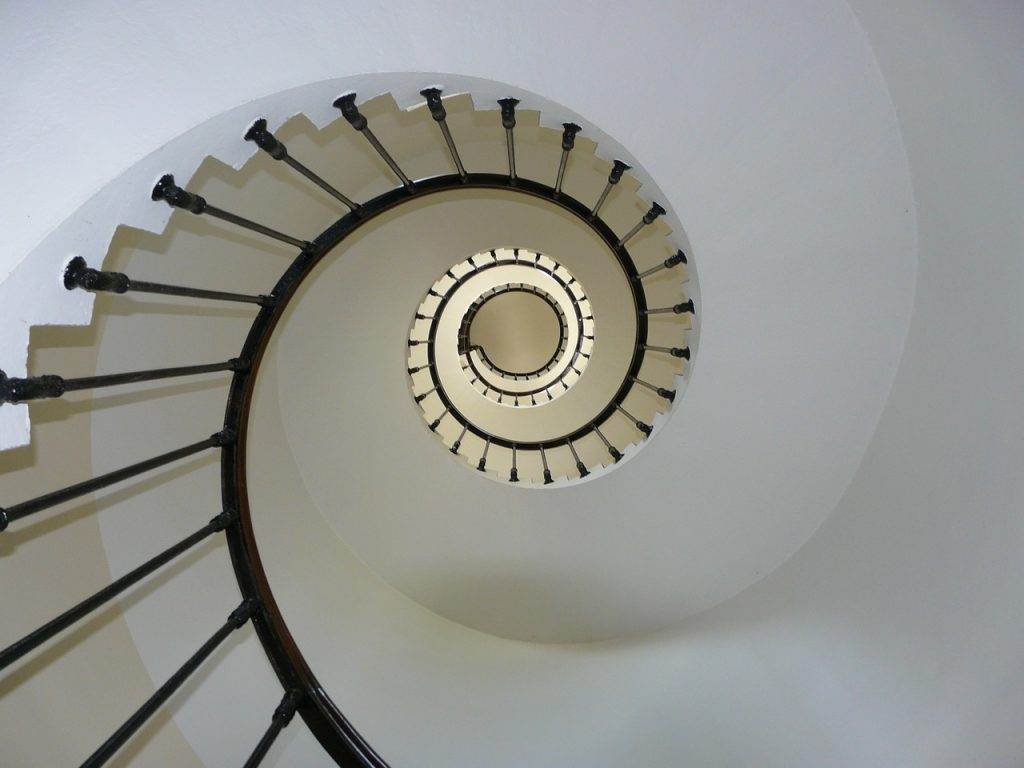When it comes to renovating your space, one crucial decision often arises: should you lay flooring before cabinets? This article provides insights on the debate surrounding the correct order of installation. By exploring the advantages and disadvantages of both approaches, you will gain a comprehensive understanding of how to make an informed decision for your flooring and cabinetry projects. Whether you prioritize functionality, aesthetics, or efficiency, this article will guide you in ensuring a successful and harmonious outcome for your renovation endeavors. When it comes to home renovations or remodeling projects, one important decision to make is whether to lay the flooring before or after installing cabinets. Both options have their pros and cons, and it’s crucial to consider various factors before making a final decision. In this comprehensive article, we will explore the different factors to consider, the pros and cons of laying flooring before cabinets, the types of flooring and cabinets available, the installation steps for flooring before cabinets, precautions during cabinet installation, budget considerations, time considerations, and professional recommendations.

Factors to Consider
Before deciding whether to lay flooring before cabinets, there are several factors you should take into account. These include the type of flooring and cabinets you choose, any budget constraints you may have, and any time constraints you need to work within.
Type of Flooring
The type of flooring you choose can play a significant role in determining whether to install it before or after the cabinets. Common types of flooring materials include hardwood, laminate, tile, vinyl, and engineered wood. Each material has its own characteristics, durability, and installation requirements, which may influence your decision.

This image is property of pixabay.com.
Type of Cabinets
Just as important as the flooring is the type of cabinets you plan to install. Common types of cabinets include base cabinets, wall cabinets, tall cabinets, and custom cabinets. Each type has different specifications and requires specific installation techniques, which may affect the order of installation.
Budget Constraints
Budget constraints are a crucial consideration for any remodeling project. You need to think about the cost of the flooring, cabinets, and any additional materials required for installation. Depending on your budget, laying the flooring before cabinets may be more cost-effective or vice versa.

Time Constraints
Time constraints can also impact your decision-making process. Consider the overall project timeline, including the time it takes to install the flooring and the cabinets separately. If you have a tight schedule, you may need to prioritize certain tasks over others.
Pros of Laying Flooring Before Cabinets
Now let’s explore the benefits of laying the flooring before installing the cabinets. While this may not be the best option for every situation, there are several advantages to consider.
Easier Installation
Installing flooring before cabinets can make the process easier and more convenient. Without cabinets in the way, you have more space to work and maneuver the flooring materials. This can streamline the installation process and save you time and effort.
Seamless Look
When the flooring is installed before the cabinets, it creates a seamless and cohesive look. The flooring extends under the cabinets, creating a smooth transition from one area to another. This can enhance the overall aesthetic appeal of the space and provide a more polished finish.
No Need for Transitions
By laying the flooring first, you eliminate the need for transitions between different flooring materials. If you choose different flooring types for various areas of your home, having the flooring installed before the cabinets can help create a more unified and seamless design.
Flexibility in Cabinet Placement
Installing flooring before cabinets allows for more flexibility in cabinet placement. Since cabinets can be placed directly on the flooring surface, you have the freedom to adjust their location without worrying about compatibility or restrictions from existing flooring. This flexibility can be especially useful if you decide to change the layout of your kitchen or other areas in the future.

This image is property of pixabay.com.
Cons of Laying Flooring Before Cabinets
While there are many advantages to laying the flooring before cabinets, it’s important to consider the potential drawbacks as well.
Potential Damage to Flooring
One of the main concerns of installing flooring before cabinets is the potential for damage. During the cabinet installation process, there is a higher risk of accidental scratches, dents, or stains on the flooring. Careful precautions must be taken to protect the flooring during cabinet installation to minimize the risk of damage.
Limited Design Options
Another disadvantage of laying flooring before cabinets is that it may limit your design options. The flooring you choose can dictate the color scheme, style, and overall aesthetic of the space. If you install the flooring first, you may have to choose cabinets that complement the flooring rather than having more flexibility in selecting your preferred cabinetry.
Difficulty in Replacing Flooring
If you ever need to replace or update your flooring in the future, having cabinets installed on top of the flooring can make the process more challenging and time-consuming. In some cases, you may need to remove or adjust the cabinets to access the flooring underneath, resulting in additional labor and potential expenses.
Extra Precaution During Cabinet Installation
When cabinets are installed directly on top of the flooring, extra caution must be taken during the installation process. Ensuring the cabinets are level, properly secured to the wall, and using shims if needed can be more complex when working around an existing flooring surface. This requires a meticulous approach and may require additional time and effort.
Type of Flooring
Now that we have explored the pros and cons of laying flooring before cabinets, let’s take a closer look at the different types of flooring available. Understanding the characteristics and installation requirements of each type can help you make an informed decision.
Hardwood
Hardwood flooring is a timeless and elegant option that adds warmth and sophistication to any space. It is known for its durability and longevity. However, hardwood is susceptible to moisture damage and requires careful maintenance. Installation typically involves nailing or stapling the planks to a subfloor.
Laminate
Laminate flooring offers a budget-friendly alternative to hardwood. It is made of multiple layers of synthetic materials, topped with a high-resolution image of wood grain or other patterns. Laminate is durable and resistant to scratches, stains, and fading. Installation usually involves a floating floor system where individual planks are clicked and locked together.
Tile
Tile flooring, such as ceramic or porcelain, is popular in kitchens, bathrooms, and other high-moisture areas. It is highly durable, water-resistant, and easy to clean. Tile comes in a variety of colors, patterns, and sizes, allowing for endless design possibilities. Installation involves cementing or using adhesives to securely bond the tiles to the subfloor.
Vinyl
Vinyl flooring is another water-resistant option that mimics the look of hardwood, tile, or stone. It is available in sheet, tile, or plank form. Vinyl is affordable, low-maintenance, and highly durable. Installation methods vary depending on the type of vinyl chosen, but they often involve adhesive application or interlocking mechanisms.
Engineered Wood
Engineered wood flooring combines the aesthetic appeal of hardwood with enhanced durability. It consists of a thin layer of real wood veneer bonded to layers of plywood or fiberboard. This construction makes engineered wood less susceptible to moisture and temperature fluctuations compared to solid hardwood. Installation typically involves floating or glue-down methods.

This image is property of pixabay.com.
Type of Cabinets
In addition to considering the type of flooring, you should also think about the type of cabinets you plan to install. The different types of cabinets have their own unique characteristics and installation requirements.
Base Cabinets
Base cabinets are installed on the floor and provide storage space for various kitchen or bathroom essentials. They typically feature a countertop for additional functionality. Base cabinets come in various widths, heights, and depths to accommodate different spaces and storage needs.
Wall Cabinets
Wall cabinets are mounted directly on the wall, above the base cabinets or in other areas of the room. They provide additional storage space without taking up valuable floor space. Wall cabinets are available in different sizes, styles, and configurations to suit your specific requirements.
Tall Cabinets
Tall cabinets, also known as pantry cabinets or utility cabinets, are designed to maximize vertical storage space. They are taller than base or wall cabinets and offer ample room for storing food, kitchen appliances, cleaning supplies, or other items. Tall cabinets can be a standalone unit or integrated with base and wall cabinets for a seamless look.
Custom Cabinets
Custom cabinets are made to your exact specifications, allowing for maximum customization and tailored solutions. These cabinets are built by skilled craftsmen who can create unique designs, finishes, and functionalities based on your preferences. Custom cabinets offer a high level of personalization but may come at a higher price point than pre-made options.
Installation Steps for Flooring Before Cabinets
If you decide to install the flooring before the cabinets, several essential steps should be followed to ensure a successful installation process. These steps include preparing the subfloor, installing the underlayment, laying the flooring, and finishing the installation with trim or molding.
Prepare the Subfloor
Before laying the flooring, it is essential to prepare the subfloor properly. This involves ensuring the subfloor is clean, dry, level, and free of any debris, unevenness, or imperfections. Depending on the type of flooring being installed, additional steps such as applying a moisture barrier or smoothing compound may be necessary.
Install the Underlayment
Next, the underlayment is installed on top of the prepared subfloor. The underlayment serves as a cushioning or moisture-resistant layer, depending on the requirements of the flooring material. It helps reduce noise, provides insulation, and ensures a smooth and stable surface for the flooring.
Lay the Flooring
Once the underlayment is in place, the flooring can be installed. Follow the manufacturer’s instructions and recommended installation techniques for your chosen flooring material. Whether it’s laying hardwood planks, fitting tile pieces, or clicking laminate or vinyl planks together, ensure each piece is properly aligned, secured, and meets the desired aesthetic.
Trim and Finish Installation
After the main flooring installation is complete, trim or molding is typically added to provide a finished look. This may include baseboards, quarter round, or transition strips to bridge the gap between different flooring materials or areas. Trim should be installed securely and according to best practices to enhance the overall appearance and functionality of the space.
Precautions During Cabinet Installation
When installing cabinets on top of flooring, it is essential to take extra precautions to protect the flooring and ensure proper installation. Below are some key considerations during the cabinet installation process.
Protecting the Flooring
To minimize the risk of damage to the flooring, protective measures must be taken during cabinet installation. This can include using protective coverings, such as blankets or mats, to prevent scratches or dents when placing tools, materials, or cabinets on the floor. It is also essential to clean up any spills or debris immediately to avoid staining the floor or compromising its integrity.
Adjustment for Leveling
Ensuring the cabinets are level is crucial for their stability and functionality. When installing cabinets on top of flooring, adjustments may be necessary to achieve a level surface. This can involve using shims or other leveling devices to make minor adjustments and ensure the cabinets are properly aligned.
Securing Cabinets to the Wall
Properly securing the cabinets to the wall is essential for their stability and safety. Use appropriate hardware, such as screws or brackets, to securely attach the cabinets to the wall studs. Care should be taken not to damage the flooring or subfloor during this process.
Inserting Shims if Needed
In some cases, cabinets may need additional support or adjustment. This can be achieved by inserting shims between the bottom of the cabinets and the flooring. Shims can help level the cabinets and provide stability. It is important to use shims carefully to avoid damaging the flooring or cabinets.
Budget Considerations
Budget constraints are a significant factor for many homeowners when deciding whether to lay flooring before cabinets. Consider the cost of the flooring, cabinets, and any additional materials required for installation.
Cost of Flooring
The cost of flooring can vary depending on the type and quality of the material chosen. Hardwood flooring tends to be more expensive compared to laminate or vinyl options. Tile and engineered wood fall somewhere in between. Take into account the total square footage of the area to be covered when estimating the cost of flooring.
Cost of Cabinets
Similarly, the cost of cabinets can vary significantly depending on the type, material, size, and customization options. Pre-made stock cabinets are generally more budget-friendly compared to semi-custom or custom cabinets. Consider your desired style, functionality, and budget when selecting cabinets.
Cost of Additional Materials
In addition to flooring and cabinets, there may be additional materials required for installation. This can include underlayment, adhesive, fasteners, trim, or molding. Be sure to include these additional costs when estimating the overall project budget.
Time Considerations
Time constraints are important to consider when deciding whether to lay flooring before cabinets. The installation time for both flooring and cabinets can impact your overall project timeline.
Flooring Installation Time
The time it takes to install flooring can vary depending on the type of material, the size of the area, and the complexity of the installation. Hardwood flooring installation typically takes longer compared to laminate or vinyl. Tile installation can also be time-consuming, especially if intricate patterns or designs are involved. Consider the estimated installation time when planning your project timeline.
Cabinet Installation Time
The time it takes to install cabinets can depend on the number and complexity of the cabinets, as well as the skill level of the installers. Custom cabinets may require more time for measurements, construction, and installation compared to pre-made options. Consider the expected installation time to ensure it aligns with your project timeline.
Overall Project Timeline
The combined installation times for the flooring and cabinets will determine your overall project timeline. If you have a tight schedule, you may need to prioritize certain tasks and plan accordingly. It’s important to factor in potential delays, such as unforeseen issues or the need for additional customization.
Professional Recommendations
Considering all the factors discussed, it is highly recommended to seek professional advice and consultation when making decisions about laying flooring before cabinets. Experts, such as flooring installers and cabinet specialists, can provide valuable insights and recommendations based on their experience and expertise.
Consultation with Flooring Installer
Engaging with a professional flooring installer can help you understand the specific requirements and challenges associated with your chosen flooring material. They can provide guidance on installation techniques, proper care and maintenance, and the impact of placing cabinets on top of the flooring. A flooring expert may also provide alternative solutions or flooring options that better suit your project and preferences.
Collaboration with Cabinet Installers
Collaborating with cabinet installers or kitchen designers can ensure a seamless integration between the cabinets and flooring. They can advise on the best placement of cabinets, potential design limitations, and any necessary adjustments to the flooring installation process. Working together can result in a cohesive and aesthetically pleasing final result.
Expert Opinion
When in doubt, seek an expert opinion. A professional contractor or remodeler can assess your specific project requirements, evaluate the feasibility of laying flooring before cabinets, and provide tailored recommendations based on your needs, budget, and timeline. Their knowledge and experience can help you make an informed decision and avoid costly mistakes.
In conclusion, deciding whether to lay flooring before cabinets or vice versa requires careful consideration of various factors. Evaluate the type of flooring and cabinets you plan to install, your budget and time constraints, and any design preferences you may have. Weigh the pros and cons of each option, taking into account the potential for damage, design limitations, and ease of installation. Seek professional advice when needed to ensure your project is successful and meets your expectations. Ultimately, the choice between laying flooring before cabinets or cabinets before flooring will depend on your specific circumstances and goals.
